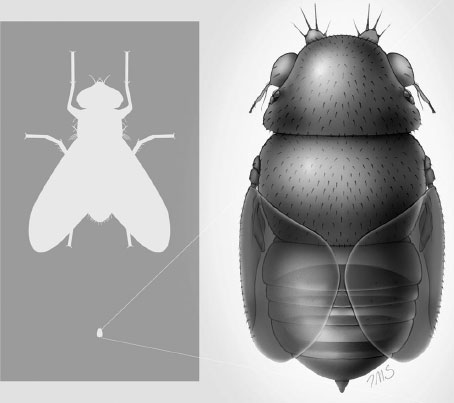Please note: Osher Rainforest will be closed for maintenance Jan. 14–16.
Science News
Teeny, Scary Flies
July 2, 2012

Scary things can come in small packages.
Take Euryplatea nanaknihali, a recently discovered fly described in this month’s issue of the Annals of the Entomological Society of America.
E. nanaknihali is the smallest fly ever discovered. At just 0.40 millimeters in length, it is 15 times smaller than a house fly and five times smaller than a fruit fly. But if you’re a small ant in Thailand, this teeny fly could be enemy number one.
That’s because E. nanaknihali is a member of the Phoridae family. These vicious flies are known for “decapitating” ants.
Some species in this family lay eggs in the bodies of ants, and the resulting larvae feed in the ants’ heads, eventually causing decapitation. Ed Yong describes the gruesome details in Discover:
When the maggots hatch, they move towards the ant’s head, where they gorge upon the brain and other tissues. The ant stumbles about in a literally mindless stupor until the connection between its head and body is dissolved by an enzyme released from the maggot. The head falls off and the adult flies burst out.
Nice, huh?
According to the author, Brian Brown of the Natural History Museum of Los Angeles County, these flies can probably decapitate some of the smallest ants in the world, ones with heads as small as 0.5 millimeters.
“It had always been assumed that smaller species of ants would be free from attack because it would be physically impossible for flies that are 1-3 millimeters in length to develop in their relatively tiny heads,” he says. “However, here we show that even the smallest host ants in a host-parasitoid system cannot escape parasitism.”